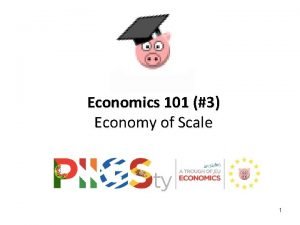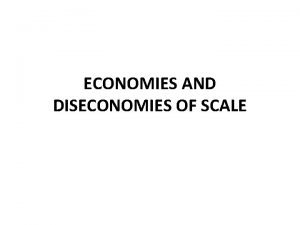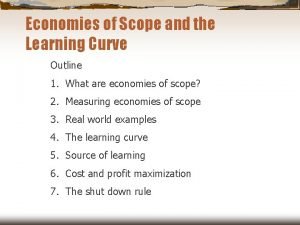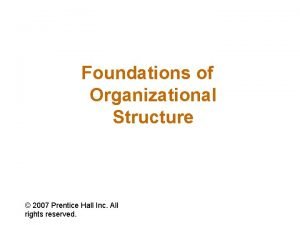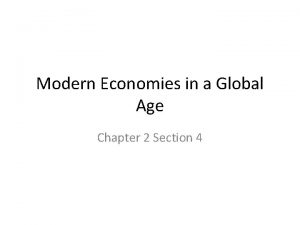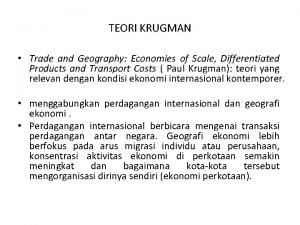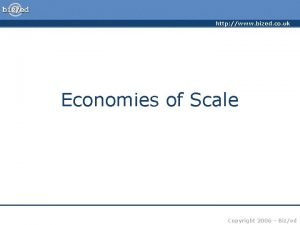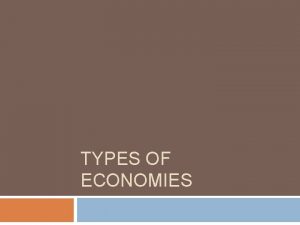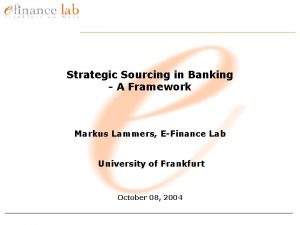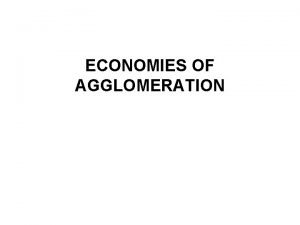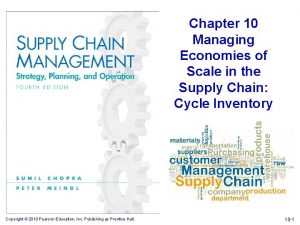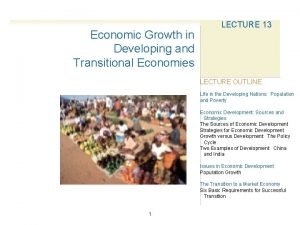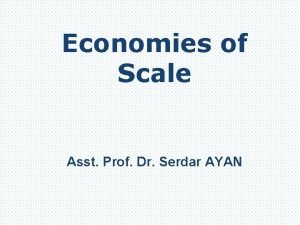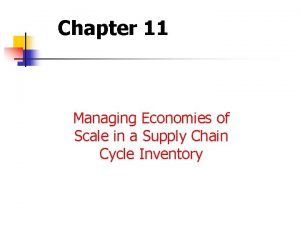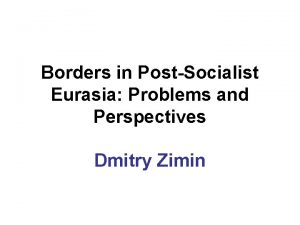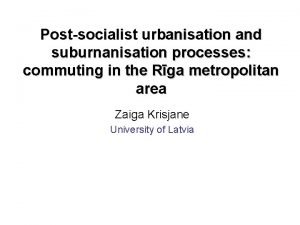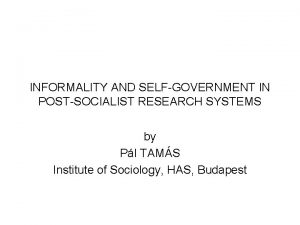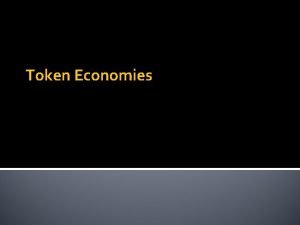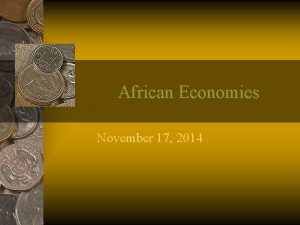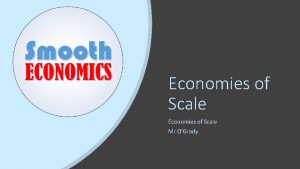25 years in the postsocialist economies John Grahl






































- Slides: 38

25 years in the post-socialist economies. John Grahl Middlesex University Presentation to the workshop on conflict in post-socialist countries

Main Source: IMF, “ 25 years of transition : post-communist Europe” A questionable judgement: “Countries that took bolder and more frontloaded reforms—notably in Central Europe and then the Baltics—were rewarded with a faster return to growth and stability, including avoiding the series of crises that hit the region in 1997 and 1998. ”

Alternative View • The real distinction is in the relationship to the EU and Germany • The crisis of 1998 was induced by the guys in the burberry macs • 1998 marked a decisive move away from neoliberalism and the beginning of recovery in the Russian Federation


Post-socialist states in Europe

Some weaknesses • • • Limited convergence Energy Dependence Recent decline in growth potential? Loss of financial autonomy? Convergence itself?

Limited convergence of post-socialist economies in Europe (1) On average, income per capita has risen from about 30 percent of EU 15 levels in the mid 1990 s to around 50 percent today. This average conceals large differences between countries, with some, such as the Baltics, making huge advances; and others, such as Bosnia and Herzegovina, Moldova, and Ukraine, getting increasingly left behind.

Limited convergence of post-socialist economies in Europe (2)

Energy Dependence: Exports

Energy Dependence : Imports

Potential Growth Slowdown

Factors in the slowdown

Demographic decline

The villainy you teach me I will execute….

Financial penetration

Financial penetration • What happens when these banks have to shed assets?

Financial penetration • What happens when these banks have to shed assets?


Reforms…. . • There is no end to reforms. If they don’t work that only shows that you haven’t reformed enough

Privatisation: Belarus behind (but note also Poland)

The least “reformed” countries….

…have the lowest unemployment

Reforms: Les mauvais élèves: Belarus, Serbia, Bosnia


Transition is bad for equality

IMF on the transition: welcome to the global economy In contrast to the turbulence and divergence of the 1990 s, growth patterns in the early and mid-2000 s were uniformly strong…. However. . . growth in this period became increasingly imbalanced. . . The resulting vulnerabilities combined with the effects of the global financial crisis with devastating effect: output declines in 2009 averaged 6 percent and ranged up to 18 percent, a more severe impact than in any other region of the world.

Unemployment rises in the crisis

IMF support programmes- much bigger in the global crisis

The Real Bifurcation? • Integration into German supply chains?


Hungary, Poland, Slovakia, Czech Republic, Lithuania - big rise in export shares

Some data on Ukraine, economic consequences of conflict Projected % Change 2015 Real GDP -5. 5 Consumer Prices 33. 5 2016 2. 0 10. 6 Source: World Economic Outlook (April 2015)

Impact of the Conflict The Eastern regions affected by the conflict comprise a non-negligible part of the economy. In 2012, the regions of Donetsk and Luhansk accounted for 15¾ percent of Ukraine’s GDP. In 2014: Q 1 their share in Ukraine’s volume of industrial production amounted to 23 percent and 14½ percent in retail trade. In addition, 23 percent of total exports of goods and 6¾ percent of total goods imports were associated with the two regions.

Growth Rates of Tax Revenue in the East (Percent; June 2014 relative to June 2013)

Ukraine - fall in FDI (1) • Emerging Europe had a difficult time in 2014, with a dearth of outbound investments from Russia impacting negatively on investment levels across central, eastern and southeastern Europe and the CIS markets. FDI into Russia itself took a plunge with a 39 per cent decrease in project numbers, although large investments by a handful of Chinese investors kept capital investment levels at an estimated $12 bn.

Ukraine - fall in FDI (2) Ukraine, locked in sectarian strife in the eastern part of the country and teetering on the brink of war with Russia, saw capital investment drop by 80 per cent and projects by 64 per cent.

Ukraine moves towards default (1) As negotiations between Kiev and its creditors stall and full-blown bankruptcy nears, the rhetoric of government communiques is shifting from conciliation to accusation. (FT website 27/05/15)

Ukraine moves towards default (2) Spot the difference in sentiment. In March a presentation to investors noted that “a collaborative process is paramount. . . Ukraine is committed to undertake consultations with its creditors”. By May the government declared it “has the right. . . not to return loans borrowed by the kleptocratic regime of Yanukovych”.
 Four score and ten years ago
Four score and ten years ago Goat years to human years
Goat years to human years 300 solar years to lunar years
300 solar years to lunar years Economy of scale
Economy of scale Technical economies of scale
Technical economies of scale Agglomeration economies
Agglomeration economies Transition economies
Transition economies Curve outline
Curve outline Chapter 7 section 1 regional economies create differences
Chapter 7 section 1 regional economies create differences Economies of scale supply chain
Economies of scale supply chain Economies of scale indivisibilities
Economies of scale indivisibilities Economies and diseconomies of work specialization
Economies and diseconomies of work specialization Modern economies in a global age
Modern economies in a global age Chapter 10 business in a global economy
Chapter 10 business in a global economy Disadvantages of economies of scale
Disadvantages of economies of scale Experience curve benefits
Experience curve benefits Traditional economies definition
Traditional economies definition Chapter 2 section 4 modern economies worksheet answers
Chapter 2 section 4 modern economies worksheet answers Southwest asia comprehension check
Southwest asia comprehension check Chapter 2 section 3 centrally planned economies
Chapter 2 section 3 centrally planned economies Mixed economies in a sentence
Mixed economies in a sentence Economies of scale ap human geography
Economies of scale ap human geography Faktor penyebab economies of scale
Faktor penyebab economies of scale 5 fundamental questions of economics
5 fundamental questions of economics Benefits of economies of scale
Benefits of economies of scale Sw asia economies cloze notes 1
Sw asia economies cloze notes 1 Cube square rule economies of scale
Cube square rule economies of scale Types of economies of scale
Types of economies of scale Three types of economies
Three types of economies Chapter 2 section 3 centrally planned economies
Chapter 2 section 3 centrally planned economies Outsourcing defintion
Outsourcing defintion Chapter 2 lesson 2 mixed economies
Chapter 2 lesson 2 mixed economies Agglomeration economies
Agglomeration economies Economies of scale
Economies of scale Transition economies
Transition economies Serdar ayan
Serdar ayan Economic system mixed
Economic system mixed Economies of scope bsg
Economies of scope bsg A key to reducing lot size without increasing costs is to
A key to reducing lot size without increasing costs is to



